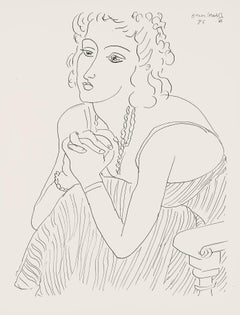1940s Abstract Prints
Modern 1940s Abstract Prints
Lithograph
Modern 1940s Abstract Prints
Lithograph
Modern 1940s Abstract Prints
Lithograph
Modern 1940s Abstract Prints
Lithograph
Modern 1940s Abstract Prints
Lithograph
Modern 1940s Abstract Prints
Lithograph
Modern 1940s Abstract Prints
Lithograph
Modern 1940s Abstract Prints
Lithograph
Modern 1940s Abstract Prints
Lithograph
American Modern 1940s Abstract Prints
Lithograph
Modern 1940s Abstract Prints
Lithograph
Modern 1940s Abstract Prints
Lithograph
Modern 1940s Abstract Prints
Lithograph
Fauvist 1940s Abstract Prints
Lithograph
Modern 1940s Abstract Prints
Lithograph, Stencil
Cubist 1940s Abstract Prints
Etching
Folk Art 1940s Abstract Prints
Screen
Modern 1940s Abstract Prints
Lithograph
Modern 1940s Abstract Prints
Lithograph
Contemporary 1940s Abstract Prints
Etching
Cubist 1940s Abstract Prints
Paper, Lithograph
Abstract 1940s Abstract Prints
Lithograph
Modern 1940s Abstract Prints
Lithograph
Modern 1940s Abstract Prints
Lithograph
Modern 1940s Abstract Prints
Lithograph
Modern 1940s Abstract Prints
Lithograph
Modern 1940s Abstract Prints
Lithograph
Folk Art 1940s Abstract Prints
Screen
Modern 1940s Abstract Prints
Paper, Lithograph
Modern 1940s Abstract Prints
Lithograph, Stencil
Modern 1940s Abstract Prints
Lithograph, Stencil
Modern 1940s Abstract Prints
Lithograph
American Modern 1940s Abstract Prints
Lithograph
1940s Abstract Prints
Etching, Aquatint
1940s Abstract Prints
Etching
American Modern 1940s Abstract Prints
Lithograph
Modern 1940s Abstract Prints
Lithograph
Modern 1940s Abstract Prints
Lithograph, Stencil
Modern 1940s Abstract Prints
Screen
American Modern 1940s Abstract Prints
Lithograph
Modern 1940s Abstract Prints
Lithograph
American Modern 1940s Abstract Prints
Screen
Modern 1940s Abstract Prints
Lithograph, Stencil
Modern 1940s Abstract Prints
Lithograph, Stencil
American Modern 1940s Abstract Prints
Screen
Modern 1940s Abstract Prints
Lithograph
Modern 1940s Abstract Prints
Lithograph
Modern 1940s Abstract Prints
Lithograph
Abstract 1940s Abstract Prints
Lithograph
American Modern 1940s Abstract Prints
Woodcut
Abstract 1940s Abstract Prints
Screen
Fauvist 1940s Abstract Prints
Lithograph
Modern 1940s Abstract Prints
Lithograph
Modern 1940s Abstract Prints
Stencil, Lithograph
Modern 1940s Abstract Prints
Lithograph
Modern 1940s Abstract Prints
Lithograph, Stencil
Fauvist 1940s Abstract Prints
Lithograph
Abstract Geometric 1940s Abstract Prints
Lithograph
Abstract Expressionist 1940s Abstract Prints
Engraving, Aquatint
Modern 1940s Abstract Prints
Lithograph
Read More
Joan Mitchell’s Rare, Late-Career Diptych Buzzes with Life
Beneath the inky blackness, the painter’s irrepressible energy electrifies this pair of intaglio prints.
The 1stDibs Guide to Types of Abstract Art
Get to know the key movements and artists who have influenced visual culture for more than a century.
Get to Know the Artists Who Led the Op Art Movement
In the 1960s and '70s, the hypnotic creations of Op artists went mainstream and influenced the look of pop culture.





